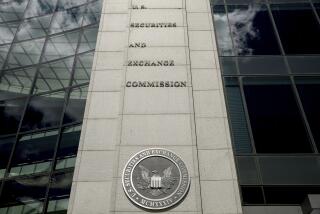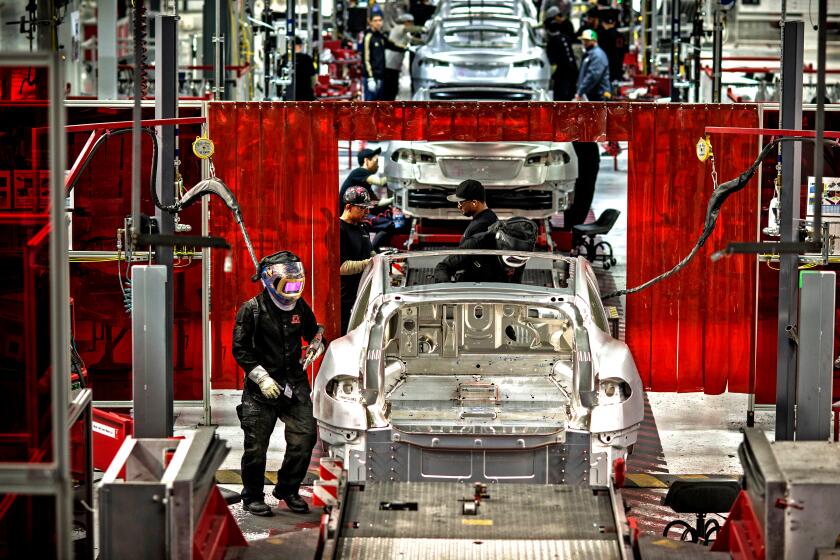Air Force Has ‘Fix’ for B-2 Stealth Shortcoming : Defense: Correcting defect will cost ‘a couple of hundred million’ but won’t change the $44.5-billion price tag on the bombers.
The Air Force said Thursday that it has a solution--at a cost of a couple of hundred million dollars--to a defect that left the Northrop B-2 Stealth bomber vulnerable to radar detection.
Air Force Secretary Donald Rice said the fix to the aircraft’s stealth capability “closes the book on major items that had to be worked,” although the aircraft still faces considerable testing to satisfy requirements set by Congress.
The B-2 is supposed to escape detection and tracking by enemy radar. But in July, 1991, the bomber failed a key test of its ability to escape radar detection--setting off a political storm when Rice went to Capitol Hill to personally acknowledge the failure.
The fixes will not increase the program’s overall price tag of $44.5 billion for 20 airplanes, Rice said. At $2.2 billion each, the B-2 represents a historic leap in military aircraft costs.
Congress suffered sticker shock at the plane’s cost, and the radar problem only exacerbated that concern. Rice has said the Pentagon erred in keeping the B-2 program and its cost secret for so long.
Fixing the radar problem would resolve a major doubt about a program that has been crucial to Northrop since it won the B-2 contract in 1981. Rice said the $200-million cost of fixing the defects will be paid under the firm’s development contract, forcing Northrop to pick up only a small fraction of the cost.
Rice said the Air Force will be able to fix the problem by making relatively minor and imperceptible changes to the plastic edges and surfaces of the bomber.
The original failure occurred at a single radar frequency, but Rice said the improvements to the bomber should reduce its radar visibility across all frequencies.
He said three options were considered to fix the problems and that the service chose the most “cost-effective” solution.
The B-2 will be no less stealthy than originally conceived, Rice said, making it far more difficult to detect than the Lockheed F-117 stealth fighter.
While the B-2 has many more tests to undergo, Rice said the program now is relatively trouble-free.
B-2 critics have long questioned whether the bomber will be vulnerable to new technology that would quickly degrade its stealth capability. After the Lockheed F-117 stealth fighter performed so well in the Persian Gulf War, those concerns appeared to die down.
Earlier this week, the Air Force notified Congress about five new, minor problems involving such areas as a rudder hinge, a deck and a radar dome. But the B-2 remains behind schedule, and testing faces serious obstacles.
The announcement about the fix was made by Rice at a Pentagon news conference, culminating a massive effort by Northrop and the Air Force.
In addition to the fixes to stealth capability, Rice said the Air Force and Northrop had developed a new stealth diagnostic system, which can precisely identify which parts of an airplane contribute to its radar visibility.







